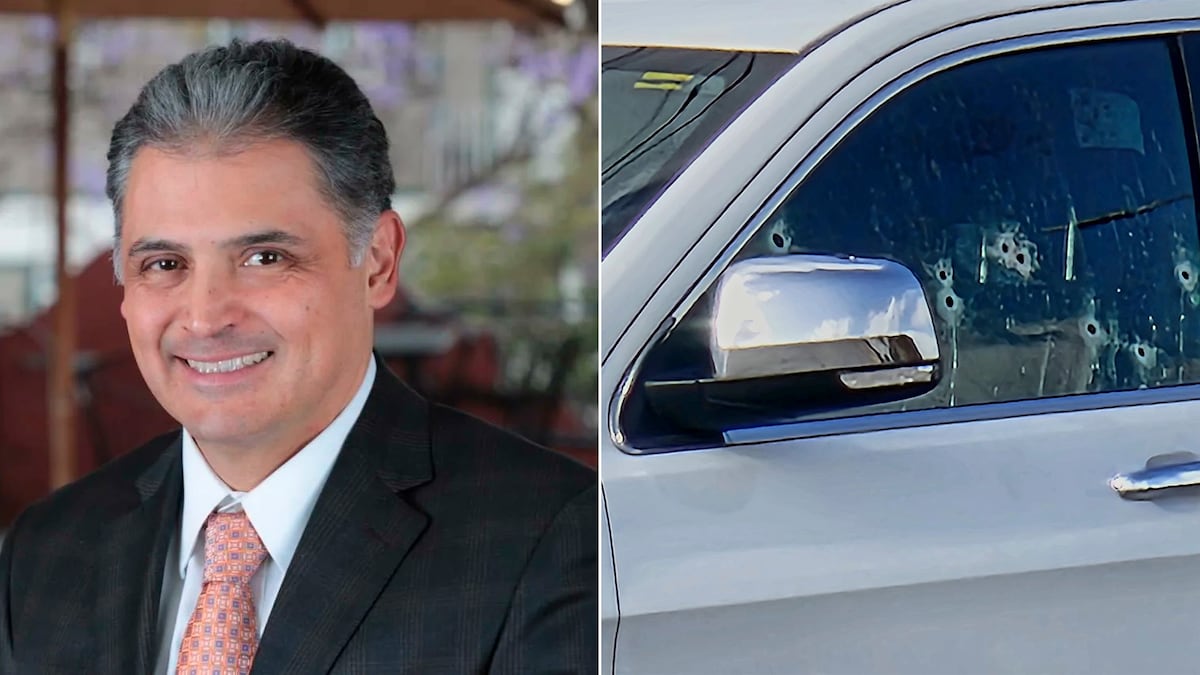Julio César Almanza Armas was murdered hours after criticizing the insecurity faced by businesses in Tamaulipas. Weeks earlier, Minerva Pérez Castro was killed for the same reason in Baja California
Business leaders in Mexico are in the crosshairs of organized crime, which has diversified its business activities and now affects all links in the production chain: from agricultural activity to the distribution and sale of products. And those who speak out pay for it with their lives.
Julio César Almanza Armas, the president of the Chamber of Commerce of the Mexican states of Tamaulipas and Matamoros, was killed on Tuesday afternoon after a dozen bullets were fired at his car’s window. His last public words have drawn attention: “Businesspeople are hostages of criminal gangs and extortion has practically become a national sport,” he said on Telediario Radio in Tampico.



There are a range of different classes of protection. The kind you’ll find most often (often enough to show up at random used car lots), is still relatively light in the grand scheme of things.
The type of round and power of the load/caliber is probably more important here. I bet whatever was fired was from a rifle and was a jacketed piercing round by the looks of the clean holes.
One if the many places I’ve worked for a short time was a CNC an manual machining shop. The owner often bid on little military contract jobs. There was this one I remember that involved milling a small kidney bean shaped pocket out of what looked like 30mm thick bluish green glass. Only, it machined more like a metal. We had no idea what the material was made our of except that it was somehow related to sapphire. It ate up ever kind of cutter in the shop. Every steel, cobalt, carbide, or insert we through at the stuff would fail before finishing the first pocket. The owner’s best guess was that the panel was a small window from an attack helicopter. Judging by the way that junk laughed off milling cutters, I don’t think lead had a chance in hell of making a dent or crack in the thing, no matter the velocity from a gun.
There are massive levels of protection possible, but you won’t find them in a typically shaped pedestrian vehicle. You start seeing higher levels of exterior anomalies in the few instances where protection is more serious. Something like a presidential motorcade usually has a limousine that looks more blocky on the outside like there is a bulge around the upper and windows area.
The doors and glass of most modern cars have a lot more curve to them than is apparent at first. You are sitting inside this curve more than you likely realize. Higher armor glass is very thick and comes in flat sheet form. If that flat glass is paired with the curve of a typical pedestrian car door, it will contact the shoulder of the occupant. More heavily protected limousines have an offset that allows that thick sheet glass the required room needed to preserve interior space.
In the typical lightly armored cars, the door glass is a little thicker than a typical windshield. I honestly wouldn’t expect it to stop much more than a .22 if it was fired directly. However, remembering from mythbusters a long time ago, the angle of windshields and their lamination is good for stopping a lot of bullets from penetrating. This is the primary protection situation. That window is not intended to take direct fire, but is intended to deflect stuff while the vehicle speeds away.
You can not machine Sapphire like that, it is too hard, as you have found out the hard way. At the same time, just like glass, it will absolutely break when you throw something soft like lead (bullet) or even water (water jet cutter) at it at high enough speeds.
So if you say this is thicker than normal glass but only rated for something like .22 at best, then I can agree.
I never said it was sapphire, just that the owner was told it was somehow related and an unknown proprietary military material. I have no idea what it was, only the empirical properties and what happened with it. Disputing the empirical is insane. Speculating about what it could have been is the only space to talk about.
The job and requirements were specified in advance. Whomever setup that job presumably did the engineering to know what could be done. It took a bunch of inserts to machine it. It was entertaining to watch. But I was just operating a manual Bridgeport mill and helping when asked.